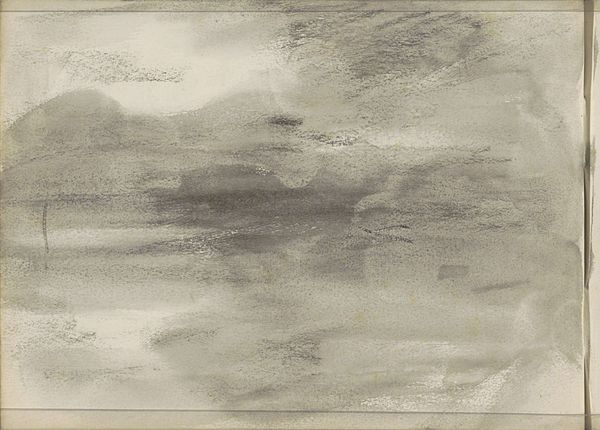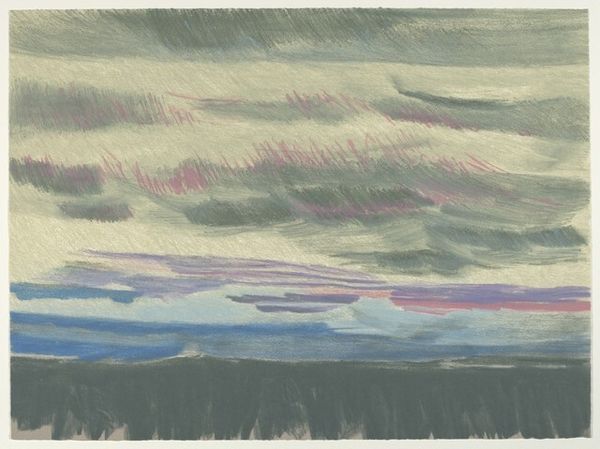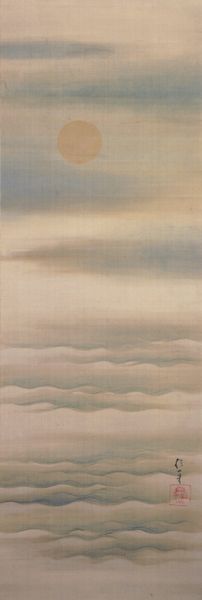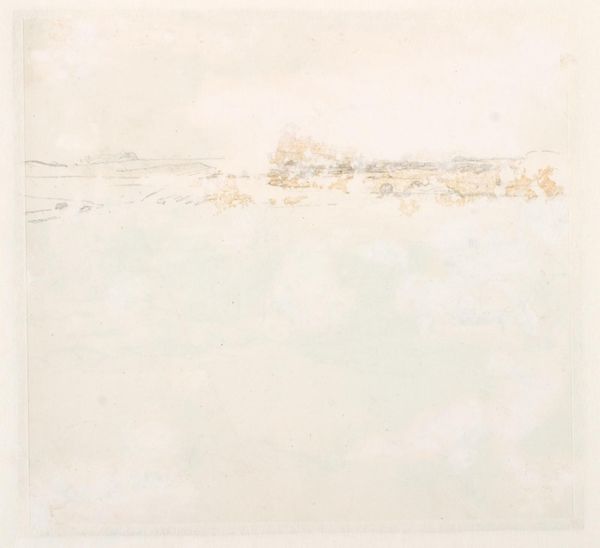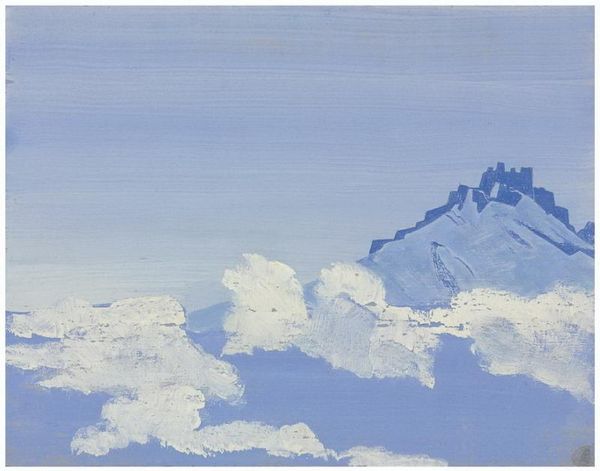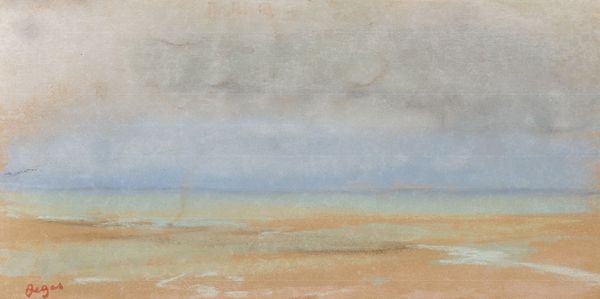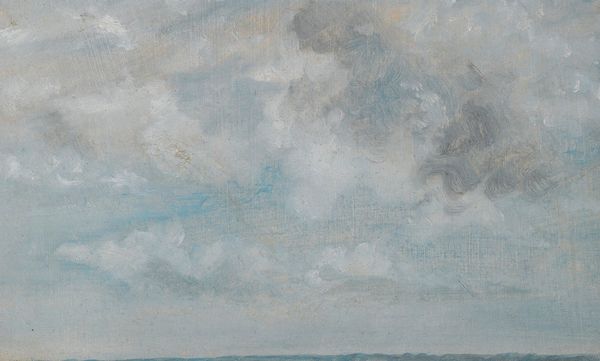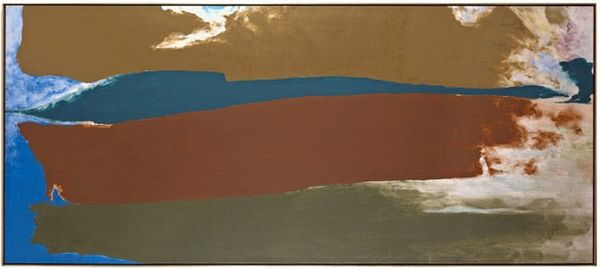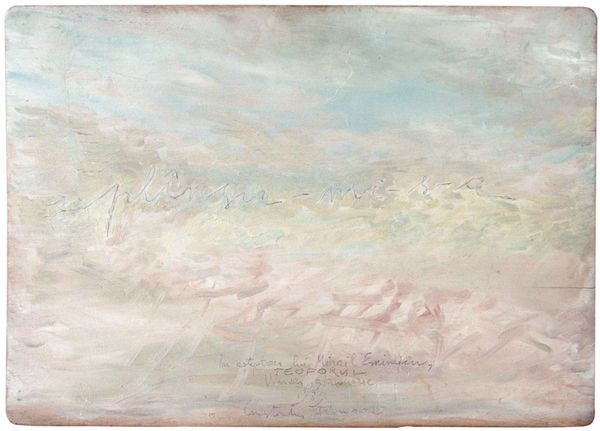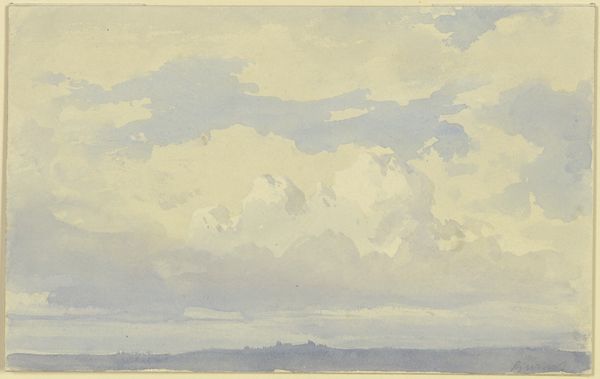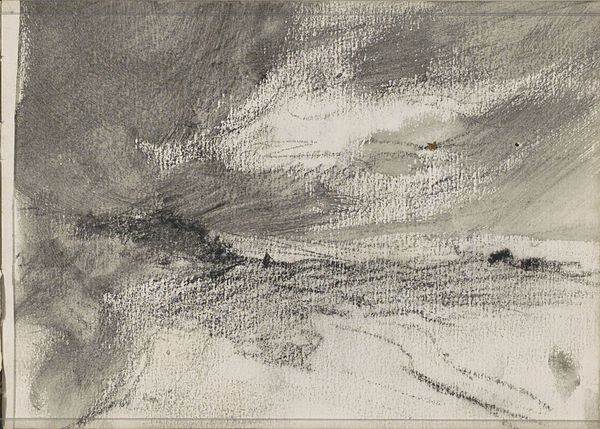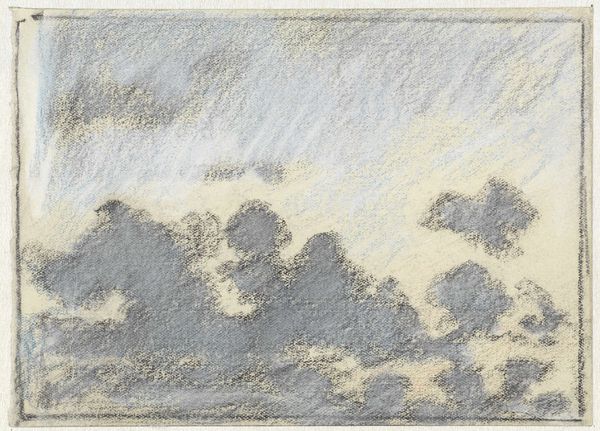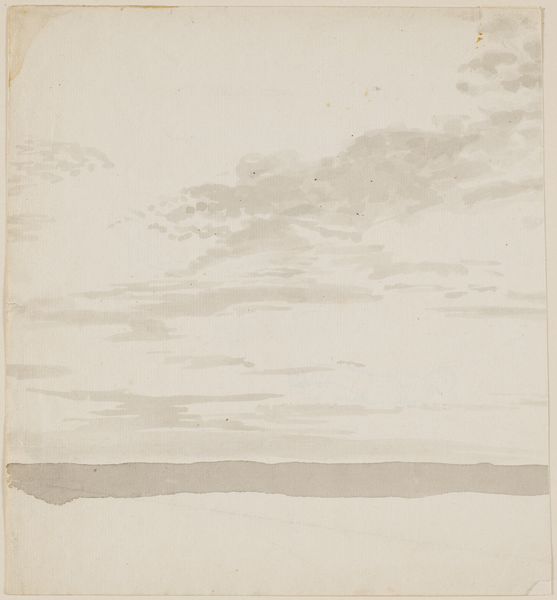
Copyright: Public domain
Curator: Editor: This is Nicholas Roerich's "Sketch," created in 1918. It’s a watercolor piece, and it evokes such a sense of quiet stillness. What do you see in this piece from your perspective? Curator: I'm drawn to the materials and the process of production here. It's watercolor, a medium often associated with preparatory work or amateur art. Yet, Roerich uses it to explore themes typically found in grand landscape painting, which were often done with oils. Do you notice how the thinness of the watercolor affects the luminosity of the painting? It nearly glows. Editor: I do see that luminosity, especially in the sky. It almost feels like you can see light filtering through the clouds. Does the choice of watercolor challenge established hierarchies? Curator: Absolutely. During this period, watercolor was often viewed as less significant than oil. By creating what seems to be more than just a preliminary “sketch” using this supposedly humbler material, Roerich challenges these art-world hierarchies. Also, given the period, it’s fascinating to consider the availability of art materials, and Roerich's resourcefulness in using watercolor to depict the landscape. Editor: So, it's not just about what he's depicting, but also how he's doing it with what’s available to him, given material limitations of that period? Curator: Exactly. It also brings to light questions around labor and artistic practice during and after World War One. Who had access to art materials? What kinds of images were possible given restrictions or availability? These are the sorts of material conditions shaping art history. Editor: That gives me a whole new way to appreciate the artwork. It’s more than just a pretty landscape, it shows that materials really tell the story. Curator: Indeed. Considering the materiality and its social context really changes the way we perceive it.
Comments
No comments
Be the first to comment and join the conversation on the ultimate creative platform.
